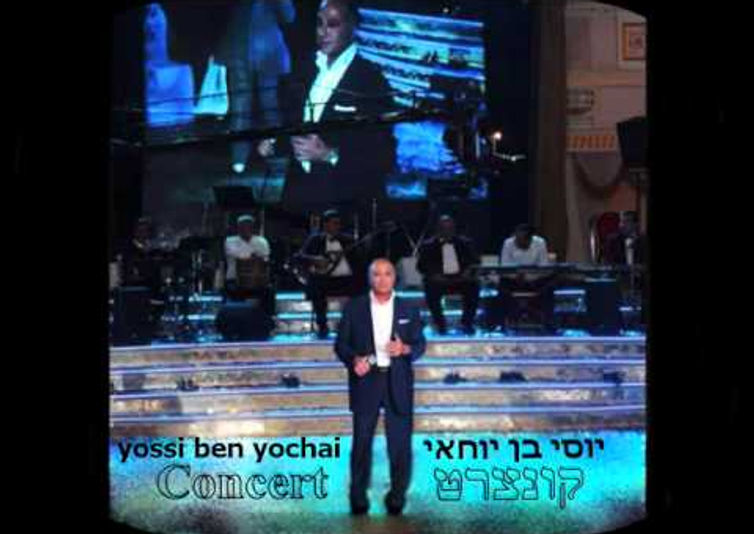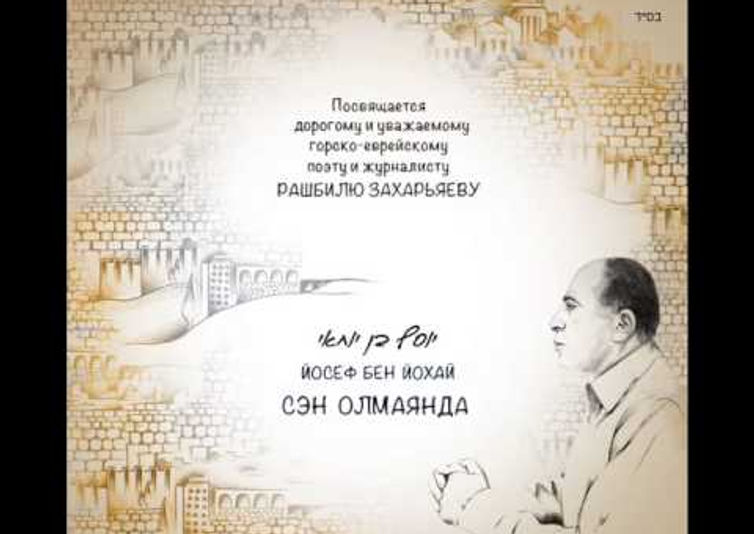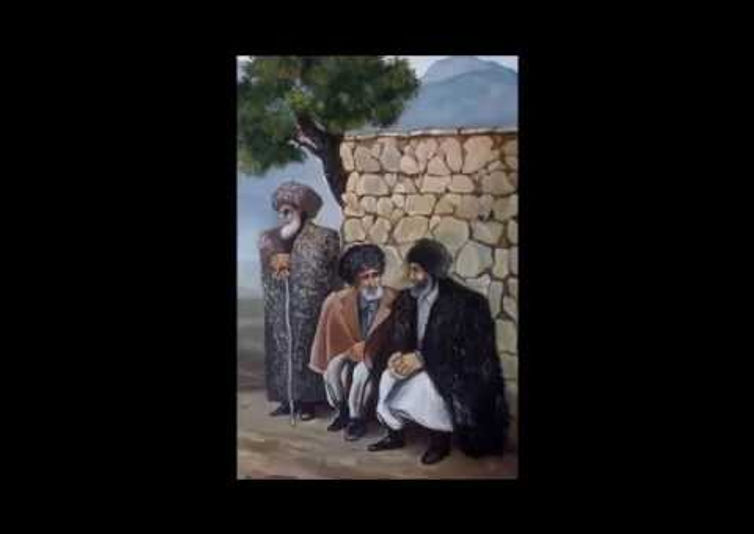Judeo-Tat / Juhuri
Description by Vitaly Shalem
Episode 4 of our Heritage Words podcast stars Juhuri!
Judeo-Tat is a language spoken in the Jewish community of the Eastern Caucasus, often referred to as the Mountain Jews (from Russian горские евреи ‘Highland Jews’). This language was originally spoken in Northern Azerbaijan and the Daghestan region of Russia, and these days can be found in migrant communities in Moscow, Saint Petersburg, and Stavropol Krai in the Russian Federation, as well as in immigrant communities in Israel, the United States, Canada, Germany, Austria, Belgium, and Australia.
The name Judeo-Tat indicates the similarity between this Jewish language variety and another one spoken in the same region by a larger, Muslim group of Iranian origin, usually referred to as Tat.
In the past, community representatives were not aware of the distinctiveness of their language and defined the community vernacular as Tat (zuhun tati ‘Tat language’) and sometimes even as the ancient Persian language (Tsherny 1884; Altshuler 1990; Pinkhasov 1909). Nowadays, older people and others with a good command of Judeo-Tat refer to this language as zuhun imu ‘our language’, zuhun ʤuhur ‘language of Jews’, or zuhun ʤuhuri ‘Jewish language’ (ʤuhur is a cognate of Persian ʤohud, Arabic jæhudi/jæhud, and Hebrew jəhudi). In Russian a great variety of names is used, though the most politically correct name nowadays is язык горских евреев ‘language of the Highland Jews’, and any reference to Tat is avoided. In Israel, Judeo-Tat is called קווקזית kavkazit ‘Caucasian’ in colloquial speech and טטית-יהודית or תאתית-יהודית tatit-jehudit ‘Judeo-Tat’ in linguistic literature. In the English of the Mountain Jewish community of Brooklyn, the word Gorsky, a borrowed form of the Russian adjective горский ‘highland’, is used to refer to the language, as well as to distinguish the community from other Jewish communities. Finally, the term Juhuri, derived from Judeo-Tat zuhun ʤuhuri ‘Jewish language’, is frequently used in all languages, by community members as well as by some scholars (Bram and Shauli 2001; Podolsky 2002; Nazarova 2002; Agarunov and Agarunov 2010; Authier 2012).
Names of the Language
Names of Language:
Judeo-Tat, Juhuri, zuhun ʤuhur, язык горских евреев, קווקזית
Territories where it was/is spoken:
originated: Northern Azerbaijan, Daghestan
today: Moscow, Saint Petersburg, Stavropol Krai; immigrant communities in Israel, US, Canada, Germany, Austria, Belgium, Australia
Estimated # speakers:
1900: 22,000-25,000
2023: 30,000-40,000 (about 200,000 - 250,000 identify as Mountain Jews)
Vitality:
endangered
Writing systems:
initially, Hebrew alphabet; in modern times Cyrillic alphabet
Literature:
Oral: wedding songs, folktales, lullabies, proverbs
Written: prayer books, translations of Zionist works, journalism, theater, poetry
Language family/branch:
southwestern branch of Iranian
Quick Facts
This Juhuri song features in episode 4 of our podcast.
Short animated film illustrating a Juhuri song
Language family
The Judeo-Tat and Tat language varieties belong to the southwestern branch of the Iranian languages and are very close to Persian and Tajik (Miller 1892; Grjunberg 1961). Some scholars think that additional research is required to determine if the Tat varieties should be considered a separate subgroup of Iranian languages (for example, Shaul Shaked, see Bram 2008; Borjian 2015).
Judeo-Tat can be divided into four different dialects, based on the geography of settlement and native speakers’ attestations: (1) the Qaitoqi dialect, named after the historical region of Kaitag in Daghestan, spoken in Northern Daghestan and some regions of the Northern Caucasus; (2) the Derbendi dialect, spoken in Derbent and neighboring villages; (3) the Qubei dialect, spoken mainly in Quba in Northern Azerbaijan; and (4) the Shirvoni dialect, named after the historical region of Shirvan in Azerbaijan, spoken in Vartashen, Ganja, and Shamakhy (Oren and Zand 1982; Nazarova 1996). The Qaitoqi dialect can be further subdivided into three different accents spoken in Northern Daghestan, Grozny, and Nalchik (Nazarova 1996).
Dialects
Multilingualism
Traditionally Judeo-Tat coexisted with Hebrew as a diglossic system with a clear division of functions: Hebrew (High) was the language of religion, education, and writing, and Judeo-Tat (Low), the vernacular language, was used in everyday communication and oral traditions (Zand 1991). The Judeo-Tat-speaking community also used a secret language to prevent the gentiles from understanding conversations between Jews. Like in other secret jargons created in the Jewish communities in Iran (Yarshater 1977), Hebrew and Aramaic were used as sources for content words, whereas function words, including pronouns, morphology, and syntax, came from the vernacular language (Miller 1929; Shalem 2013, 2018).Knowledge of other local languages varied from region to region: Azerbaijani in Azerbaijan and Southern Daghestan, Kumyk in Northern Daghestan, Chechen in Grozny, and Kabardian in Nalchik were often spoken as the second language (Zand 1991; Altshuler 1990; Musakhanova 1993). Though it was introduced into the region in the 19th century, Russian became an important part of community multilingualism only with the establishment of the Soviet government in the region (Altshuler 1990; Zand 1991).




Judeo-Tat compared to Tat
Throughout the history of research, Judeo-Tat has been described as a dialect of Tat (Miller 1892; 1903), a group of dialects among the dialects of Tat (Oren and Zand 1982), a Jewish ethnolect (Zand 1991), or a separate language (Nazarova 1994; 2002). Judeo-Tat and Tat possess common features that distinguish them from immediately genetically related languages, like Modern Persian, and at the same time show significant differences on all levels, which prevent mutual intelligibility between speakers of Muslim and Jewish origin (Nazarova 1996). Judeo-Tat is usually considered more archaic, because it preserves some features that were completely or partially lost in closely related languages (Grjunberg and Davydova 1982; Nazarova 1996).
There are many differences between Judeo-Tat and Tat, including the following:
-
Unlike Persian or Tat, Judeo-Tat preserved the two pharyngeal consonants /ħ/ and /ʕ/. These sounds mainly occur in the Semitic vocabulary, borrowings from Arabic and Hebrew, but also appear in some Iranian words (Grjunberg and Davydova 1982).
-
Another characteristic feature of Judeo-Tat historical phonology is the systematic deletion of word-final /n/ (Grjunberg and Davydova 1982).
-
Judeo-Tat shows some differences in formation of verb structures, as well as limited use of verbal prefixes, which are also systematically omitted if the form is used with a negative particle.
-
Different auxiliaries are used in passive forms: Tat uses biræn ‘to be’ and Judeo-Tat uses omorɛ ‘to come’ (Grjunberg and Davydova 1982; Anisimov 1932; Grjunberg 1963b).
-
Judeo-Tat, unlike any other genetically related language, has preserved the forms of the optative mood. The optative forms are created with the present stem of a verb and special personal endings (Grjunberg and Davydova 1982).
-
Another interesting feature well preserved in Judeo-Tat, is the use of clause-final conjunctions, namely enclitics attached to the verb of a subordinate clause (Shalem 2018; see also Grjunberg and Davydova 1982).
Lexicon
The basic Judeo-Tat vocabulary is of Iranian origin. A considerable part is Turkic, borrowed from various source languages depending on the dialect of Judeo-Tat: Azerbaijani influenced the vocabulary of the Qubei, Shirvoni, and Derbendi dialects, whereas some Turkic borrowings in the Qaitoqi dialect are from Kumyk. Arabic words in Judeo-Tat are quite numerous and may be borrowed either from the Persian or Turkic languages. Although scholars mention a great number of words borrowed from Hebrew and Aramaic (Nazarova 1996), they are not very numerous (Miller 1932). Russian words from earlier stages may have been borrowed via other languages, and later directly from Russian. These loans were normally related to the new realities created by the Soviet era: culture, science, technology, etc. There were probably some borrowings from the Caucasian languages spoken in the region, but this subject has not been studied.
Songs in Juhuri
Oral traditions, publishing activities, and literature
A rich oral tradition preceded the written literature of the Mountain Jews, including wedding songs, lullabies, folk tales, and proverbs (Musakhanova 1993; Zand 1985, 1991).Writing in Judeo-Tat was an established tradition by the second half of the 19th century, but Judeo-Tat was mainly used by “simple people” to write letters, business notes, etc. (Altshuler 1990: 363–364). The beginning of publishing activities and the formation of a new literary tradition began in the 20th century. The first two books published in Judeo-Tat were Mɛtlɛb siyniho (The Goal of the Zionists, 1908), a translation of Yosef Sapir’s Russian Сионизм (Zionism, 1903), and a Jewish prayer book, Qol tefila (Voice of Prayer, 1909), with a parallel Judeo-Tat translation by Asaf Pinhasov (1884–1920).
Several issues of the first newspaper in this language were published in Baku in 1915–1916. After the establishment of the Soviet government in the Eastern Caucasus, publishing activities continued in Azerbaijan. Starting in 1927, the center of publishing activity moved to Daghestan. This period was also characterized by language planning discussions (Musakhanova 1993). The Derbendi dialect was selected as the basis for the literary language. The strongest debates were about the sources for lexical enrichment. Three different approaches were discussed: to use Hebrew, Azerbaijani, or Persian as source languages. In practice, Russian, which was generally used by other local languages in Daghestan, became the primary source language.
In 1938, the constitution of Daghestan ASSR declared Tat (de facto Judeo-Tat) one of the ten official languages in the republic (Oren and Zand 1982), thus making Judeo-Tat one of the few Jewish languages that had an official status.Amateur theatrical companies were the first triggers for literary creation in Judeo-Tat in the 20th century.
Poetry, often influenced by the mainstream subjects of the Soviet era, was published in the newspapers. Prose was the last genre to develop. Even though Judeo-Tat publishing activities were limited, a number of talented writers created drama, poetry, and prose, like Yuno Semenov, Mishi Bakhshiev, Khizgil Avshalumov, Daniil Atnilov, Sergey Izgiyaev, and others (Musakhanova 1993; Zand 1985, 1986, 1991).
Theater productions


Writing and Alphabets
Initially, Judeo-Tat was written in the Hebrew alphabet. In 1929, the decision to move to Latinized script was accepted (Musakhanova 1993; Zand 1991), and in 1938, the Cyrillic alphabet replaced the Latinized one (Zand 1991). In Azerbaijan, the Azerbaijani Cyrillic alphabet was unofficially adapted to Judeo-Tat. Nowadays, both Cyrillic alphabets are used in print, but occasionally the use of the Latinized script can be observed, as well.
The Juhuri phrase “mother tongue” in all four writing systems:
- זאוּהאוּן דאדאיאִ (Hebrew)
- zuhun dәdәji (Latin)
- зугьун дедеи (Dagestani Cyrillic)
- зуһун дәдәји (Azerbaijani Cyrillic)
Starting in the 1920s, the significance of the Russian language grew rapidly. And at the same time the position of Judeo-Tat as a community vernacular was weakening. Already in the 1950s, many of the Mountain Jews either were fluent Judeo-Tat–Russian bilinguals or knew their community’s vernacular only as a second language (Zand 1986; 1991).
Bilingual parents generally used Judeo-Tat as a secret language to hide things from their children, who sometimes acquired some knowledge of the community’s language through communication with the older generation. Often it was not possible to compensate for the lack of communication in the native language inside the family, because there were no schools with Judeo-Tat as the language of instruction. As a result, the next generation produced a great number of semi-speakers: They could understand the language but could barely speak it.
The situation was different in places where the Jewish population was a majority and Judeo-Tat served as a community language. However, the language could not provide up-to-date vocabulary for many subjects and could not compete with Russian or Azerbaijani. When speakers could not find the right words in Judeo-Tat for a conversation, they switched to another language. This often resulted in feelings of inferiority regarding the native language.
The sociolinguistic situation became even more complicated after the majority of the Mountain Jews left the traditional regions of settlement. New languages entered the linguistic scene, and Hebrew, English, or German became additional parts of the multilingualism of the community.
The UNESCO Atlas of the World’s Languages in Danger (2010) classifies Judeo-Tat as an endangered language, listing two locations: Israel and the Caucasus. The language is still spoken in many other locations, and the level of knowledge can vary as it highly depends on the family background, social involvement, and further demographic changes. But for most locations, the degree of endangerment lies between definitely endangered and severely endangered.
The only exception is the community in Qırmızı Qəsəbə (a small municipality next to Quba) in Azerbaijan, where the language is still transmitted from parents to children and is used in everyday life (Clifton et al. 2005). However, almost all speakers (except for children of pre-school age) are multilingual; there are no schools where Judeo-Tat is the language of instruction; there is low availability of materials for education and literacy; the language is unable to meet the challenges of modernity and has no official status; and the language is documented in a fragmentary way. All of this makes the status of Judeo-Tat spoken in Qırmızı Qəsəbə vulnerable.
The number of speakers is estimated between 30-50 thousand. This should not be confused with the number of people who identify themselves as the Mountain Jews, which is higher and estimated between 200-250 thousand people.
Language Shift
Current Status
Stories
Recent Activities and Language Preservation
Although many younger members of the community have a very low command of the language, Judeo-Tat still serves as a very important part of the collective identity of this community (Bram 2008). There are very strong feelings of nostalgia. At the same time, some speakers realize that the language is in danger of disappearance and attempt some actions to preserve the language.
This often results in some new activities involving the usage of Judeo-Tat, as well as the creation of some resources. Check out some of these resources below:
Language Lessons
Communities in Social Networks
Академия языка джуури [The Academy of the Juhuri language] on Facebook
Resources
Description and videos of spoken language:
Endangered Language Alliance: Jewish Languages: Juhuri
Automatic transliteration from Juhuri Cyrillic to Latin letters by Harris Mowbray




Qırmızı Qəsəbə, Jewish village in Azerbaijan where Judeo-Tat is spoken: town, school, synagogue, and cemetery (images from Google)
To cite: Shalem, Vitaly. n.d. Judeo-Tat/Juhuri. Jewish Language Website, Sarah Bunin Benor (ed.). Los Angeles: Jewish Language Project. https://www.jewishlanguages.org/judeo-tat-juhuri. Attribution: Creative Commons Share-Alike 4.0 International.

























